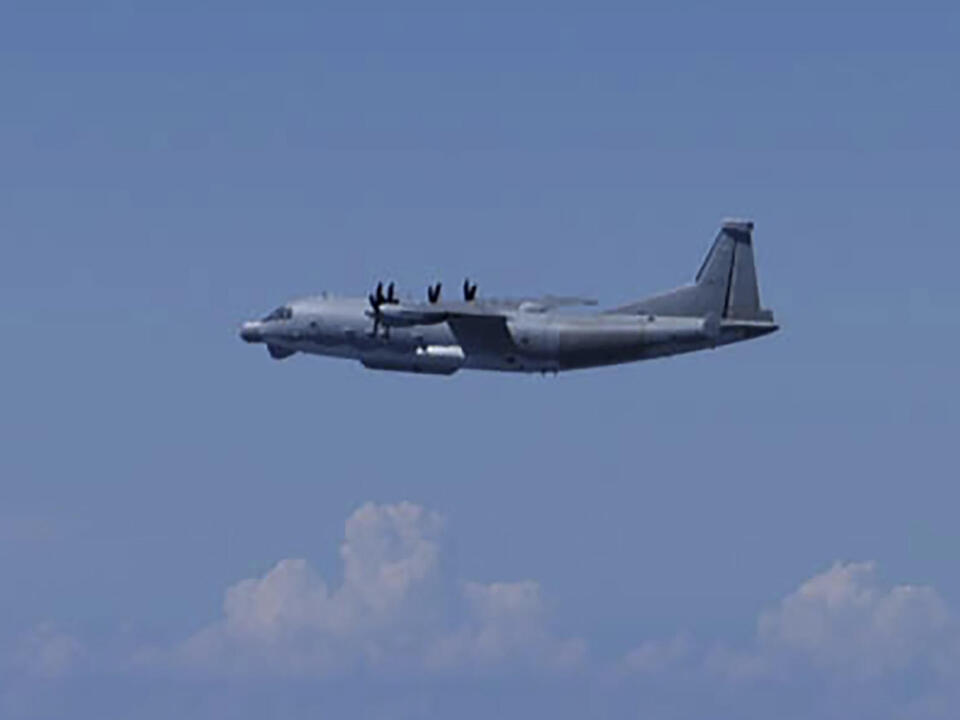Physical Address
304 North Cardinal St.
Dorchester Center, MA 02124
Physical Address
304 North Cardinal St.
Dorchester Center, MA 02124

Japan scrambled its fighter jets on Monday in response to a Chinese military aircraft entering its airspace, marking a significant escalation in regional tensions. This incident follows closely on the heels of the U.S. military’s interception of several Russian and Chinese bombers in international airspace near Alaska’s coast.
The breach occurred at around 11:29 a.m., when a Y-9 surveillance aircraft intruded for approximately two minutes into Japanese airspace. Local media reported that this marked the first recorded instance of a Chinese military plane violating Japan’s territorial airspace.
According to Japan’s defense ministry, the aircraft encroached upon the airspace off the Danjo Islands in Nagasaki Prefecture, which prompted the emergency deployment of fighter jets. The ministry further noted that measures such as issuing warnings were taken, although NHK reported that no weapons were fired as a signal.
In the wake of the incident, Deputy Foreign Minister Masataka Okano summoned China’s acting ambassador to lodge a formal protest. He urged for steps to be taken to prevent similar occurrences in the future, as indicated by statements from the foreign ministry. In response, the Chinese diplomat indicated that the matter would be escalated to Beijing, yet there was no immediate official comment from China.
Japan’s military has reported scrambling jets nearly 669 times between April 2023 and March 2024, with around 70% of these interceptions being aimed at Chinese military aircraft. It’s important to note that these figures do not include instances of airspace violations.
Just last month, U.S. Northern Command (NORAD) reported that two Russian Tu-95 bombers, accompanied by two Chinese H-6 bombers, entered the Alaskan Air Defense Identification Zone. U.S. F-16 and F-35 jets, alongside Canadian CF-18s, were deployed to intercept these bombers.
Japan’s defense officials have expressed growing concerns about the escalating military collaboration between Chinese and Russian air forces, especially with China’s increasingly assertive maneuvers around Japan’s waters and airspace. As a countermeasure, Tokyo has significantly bolstered defenses, particularly in the southwestern region, which includes strategic remote islands vital to Japan’s defense posture.
China’s expanding military and economic influence in the Asia-Pacific, coupled with its assertive stance in various territorial disputes, particularly regarding Taiwan, has alarmed the United States and its allies. Over recent years, Japan, historically a pacifist nation, has ramped up its defense spending with encouragement from the U.S. This includes the acquisition of “counter-strike” capabilities and easing restrictions on arms exports.
In April, President Biden and Japanese Prime Minister Fumio Kishida announced plans to enhance military and intelligence cooperation. Additionally, Japan has been providing funding and resources, such as patrol boats, to neighboring countries and has reached agreements, like the one established in July, that enables troop deployments on each other’s territory.
Efforts have also been made between Japan and South Korea to reconcile historical disputes, indicating a strengthening of regional ties. Furthermore, Japan is part of the Quad alliance with the United States, Australia, and India, which serves as a strategic bulwark against Chinese assertiveness.
Experts believe the recent actions taken by the Chinese Y-9 aircraft were likely aimed at probing Japan’s air defense capabilities by collecting electronic intelligence on Japan’s radar systems and coverage.
In the broader context of ongoing maritime disputes, Japanese and Chinese vessels have encountered intense confrontations, particularly around the Senkaku Islands in the East China Sea, an area known to China as the Diaoyus. These remote islands have been the focal point of heightened diplomatic tensions and have seen numerous clashes between Japanese coastguard vessels and Chinese fishing boats.
Near the Danjo Islands, where Monday’s incident took place, Japan reported an increase in Chinese maritime activity, including coastguard vessels and even a nuclear-powered submarine. Prior incursions by Chinese non-military aircraft near the Senkaku islands have occurred, being logged as far back as 2012.
China recently imposed measures against two Philippine Coast Guard ships that entered waters near the disputed Sabina Shoal in the South China Sea. In light of rising tensions, both the U.S. and Philippine governments have increased their coast guard presence in the vicinity, as the Philippines remains apprehensive about potential Chinese construction of an artificial island there.
As tensions between nations continue to rise, U.S. National Security Advisor Jake Sullivan is set to visit Beijing for three days, starting Tuesday, to meet with China’s foreign minister Wang Yi, with the aim of easing bilateral tensions ahead of the upcoming U.S. elections in November.
Source: Associated Press



